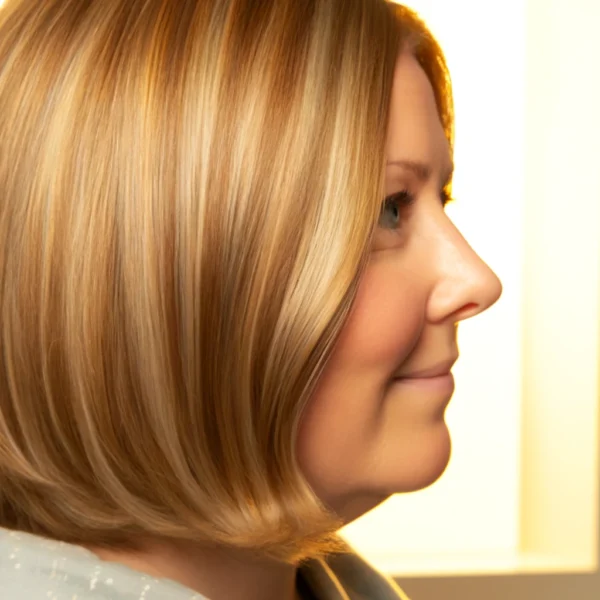Unbeknownst to many, the term ‘Shampoo’ traces its roots back to India. It originates from the Hindi word ‘chāmpo’, translating to ‘massage’, implying the process of smoothing hair from root to tip. This is deemed as the optimal method for hair washing and decidedly far superior to rigorous scrubbing which can cause damage to the hair cuticle.
Unravelling the science of shampoo, we discover it is essentially a mixture of water and detergent with the occasional addition of herbal extracts, proteins, fats, and conditioners. At its most basic, to effectively cleanse your hair, all you require is a suitably diluted detergent that can successfully detach dirt and grease from your hair, emulsify the oils (hold them in suspension in water), and facilitate their removal through rinsing.
When looking for a suitable shampoo the most important thing you need to know is the concentration and the harshness of the detergent in it. The problem is there is no way for the average consumer to find that out. The detergent content in shampoos can range anywhere between 1 to 25 percent. It may be exactly the same detergent, sodium lauryl sulfate based detergents are the most common, but the concentration will vary considerably from brand to brand and even within a manufacturers’ product range.
Contrary to popular belief, the cost of a shampoo seldom serves as an accurate indicator of the detergent concentration or its quality. You might find that inexpensive shampoos pack a high detergent concentration, while high-end alternatives might contain significantly less of an inexpensive detergent. What often dictates the price point for a shampoo is branding and the market segment the company is targeting.
Misleadingly, factors that one might presume point to the detergent’s power, such as labels indicating suitability for oily hair, rarely correlate with the detergent content. In reality, shampoos for oily and dry hair could contain identical detergents at equivalent concentrations. The real differentiation might stem from reduced oil or conditioning agent content in the shampoo for oily hair, or occasionally it might merely be a case of different packaging. The consistency / thickness of the shampoo liquid is also not an indicator of detergent concentration. There are many thickening agents that can be added that contribute nothing to the actual cleaning action of shampoo.
Since the detergent concentration isn’t disclosed on the labels, the practical approach to discovering the right shampoo involves a process of trial and error. Consider sampling a few shampoos that appeal to you and conduct a comparative analysis at home. Don’t be tempted to purchase a shampoo merely for its additional components such as herbal extracts. The truth is, these elements typically don’t have a significant impact, mainly due to their low concentration in the shampoo and the fact that most are rinsed off the hair pretty quickly.
While embarking on the journey to find your perfect shampoo, bear in mind the following criteria:
Application : The shampoo should be easy to apply. It’s worth mentioning that all-in-one shampoo-conditioners often fail to perform as well as separate products. Despite requiring extra effort, using distinct shampoo and conditioner usually yields superior results.Cleansing : Ideally, a single application should suffice to thoroughly cleanse your scalp unless you have excessively oily or dirty hair. Even so, it’s rarely necessary to wash your hair more than twice with a modern shampoo.Hair Texture : Your hair should feel soft, look shiny, and be easy to brush and comb post-shampooing. Achieving this largely depends on conditioning agents – a common addition to modern shampoos. However, a separate conditioner might still be required.Rinsing : The shampoo should rinse off easily without leaving any residue. In hard water areas (water that contains a lot of dissolved minerals in it), there is a greater likelihood of residue being left on the hair, which can be eliminated using an acid rinse. Diluted lemon juice or cider vinegar are popular options. Ensure you apply a good conditioner following an acid rinse otherwise the hair will feel very “dry” and won’t be shiny.Scalp Compatibility : The shampoo shouldn’t cause any irritation to the scalp skin. A growing trend of incorporating herbal extracts in shampoos has led to an increase in scalp dermatitis complaints. Should your shampoo cause irritation, opt for a herb-free alternative or switch to a different detergent if required. Certain common shampoo detergents, like sodium lauryl sulfate, can also trigger irritation in sensitive skin.Personal Preferences : The color, fragrance, texture, and lather of the shampoo should align with your personal preferences. None of these factors are vital for efficient cleansing and primarily cater to individual taste. Even lather isn’t a prerequisite for effective cleaning, although we’ve been habituated to associate it with cleanliness. Many shampoos include lather-enhancing ingredients which, while producing bubbles, don’t necessarily contribute to the cleaning process.The global shampoo market was estimated to be worth over $25 billion in 2020 and is expected to grow significantly over the next decade. As such, there are a myriad of products and shampoo producers out there making and selling many different shampoos for all kinds of hair types, but that makes it rather challenging to find the right shampoo for you. In essence, the journey to finding the perfect shampoo may involve some trial and error, but keeping the points above in mind will help you make an informed decision, ensuring your hair receives the best care it deserves.
Bibliography
11711645 {11711645:U8SMUK4F},{11711645:7AESNBF7},{11711645:NPDZISNV},{11711645:DCBMXZD5},{11711645:U28BBCST},{11711645:QTQPHT72},{11711645:NMP4SPH6},{11711645:5F5S2RIZ},{11711645:FDU7XQMW},{11711645:NENJ9XVV} 1 vancouver 50 date asc 340 https://www.keratin.com/wp-content/plugins/zotpress/ %7B%22status%22%3A%22success%22%2C%22updateneeded%22%3Afalse%2C%22instance%22%3Afalse%2C%22meta%22%3A%7B%22request_last%22%3A0%2C%22request_next%22%3A0%2C%22used_cache%22%3Atrue%7D%2C%22data%22%3A%5B%7B%22key%22%3A%22FDU7XQMW%22%2C%22library%22%3A%7B%22id%22%3A11711645%7D%2C%22meta%22%3A%7B%22creatorSummary%22%3A%22Mainkar%20and%20Jolly%22%2C%22parsedDate%22%3A%222000%22%2C%22numChildren%22%3A0%7D%2C%22bib%22%3A%22%26lt%3Bdiv%20class%3D%26quot%3Bcsl-bib-body%26quot%3B%20style%3D%26quot%3Bline-height%3A%201.35%3B%20%26quot%3B%26gt%3B%5Cn%20%20%26lt%3Bdiv%20class%3D%26quot%3Bcsl-entry%26quot%3B%20style%3D%26quot%3Bclear%3A%20left%3B%20%26quot%3B%26gt%3B%5Cn%20%20%20%20%26lt%3Bdiv%20class%3D%26quot%3Bcsl-left-margin%26quot%3B%20style%3D%26quot%3Bfloat%3A%20left%3B%20padding-right%3A%200.5em%3B%20text-align%3A%20right%3B%20width%3A%201em%3B%26quot%3B%26gt%3B1.%26lt%3B%5C%2Fdiv%26gt%3B%26lt%3Bdiv%20class%3D%26quot%3Bcsl-right-inline%26quot%3B%20style%3D%26quot%3Bmargin%3A%200%20.4em%200%201.5em%3B%26quot%3B%26gt%3BMainkar%2C%20Jolly.%20Evaluation%20of%20commercial%20herbal%20shampoos.%20International%20Journal%20of%20Cosmetic%20Science.%202000%3B22%285%29%3A385%26%23x2013%3B91.%26lt%3B%5C%2Fdiv%26gt%3B%5Cn%20%20%20%26lt%3B%5C%2Fdiv%26gt%3B%5Cn%26lt%3B%5C%2Fdiv%26gt%3B%22%2C%22data%22%3A%7B%22itemType%22%3A%22journalArticle%22%2C%22title%22%3A%22Evaluation%20of%20commercial%20herbal%20shampoos%22%2C%22creators%22%3A%5B%7B%22creatorType%22%3A%22author%22%2C%22name%22%3A%22Mainkar%22%7D%2C%7B%22creatorType%22%3A%22author%22%2C%22name%22%3A%22Jolly%22%7D%5D%2C%22abstractNote%22%3A%22%22%2C%22date%22%3A%2210%5C%2F2000%22%2C%22language%22%3A%22en%22%2C%22DOI%22%3A%2210.1046%5C%2Fj.1467-2494.2000.00047.x%22%2C%22ISSN%22%3A%2201425463%2C%2014682494%22%2C%22url%22%3A%22%22%2C%22collections%22%3A%5B%22V872D6RW%22%5D%2C%22dateModified%22%3A%222023-10-28T13%3A53%3A36Z%22%7D%7D%2C%7B%22key%22%3A%22NENJ9XVV%22%2C%22library%22%3A%7B%22id%22%3A11711645%7D%2C%22meta%22%3A%7B%22creatorSummary%22%3A%22Tr%5Cu00fceb%22%2C%22parsedDate%22%3A%222007-05%22%2C%22numChildren%22%3A0%7D%2C%22bib%22%3A%22%26lt%3Bdiv%20class%3D%26quot%3Bcsl-bib-body%26quot%3B%20style%3D%26quot%3Bline-height%3A%201.35%3B%20%26quot%3B%26gt%3B%5Cn%20%20%26lt%3Bdiv%20class%3D%26quot%3Bcsl-entry%26quot%3B%20style%3D%26quot%3Bclear%3A%20left%3B%20%26quot%3B%26gt%3B%5Cn%20%20%20%20%26lt%3Bdiv%20class%3D%26quot%3Bcsl-left-margin%26quot%3B%20style%3D%26quot%3Bfloat%3A%20left%3B%20padding-right%3A%200.5em%3B%20text-align%3A%20right%3B%20width%3A%201em%3B%26quot%3B%26gt%3B1.%26lt%3B%5C%2Fdiv%26gt%3B%26lt%3Bdiv%20class%3D%26quot%3Bcsl-right-inline%26quot%3B%20style%3D%26quot%3Bmargin%3A%200%20.4em%200%201.5em%3B%26quot%3B%26gt%3BTr%26%23xFC%3Beb%20RM.%20Shampoos%3A%20ingredients%2C%20efficacy%20and%20adverse%20effects.%20J%20Dtsch%20Dermatol%20Ges.%202007%20May%3B5%285%29%3A356%26%23x2013%3B65.%26lt%3B%5C%2Fdiv%26gt%3B%5Cn%20%20%20%26lt%3B%5C%2Fdiv%26gt%3B%5Cn%26lt%3B%5C%2Fdiv%26gt%3B%22%2C%22data%22%3A%7B%22itemType%22%3A%22journalArticle%22%2C%22title%22%3A%22Shampoos%3A%20ingredients%2C%20efficacy%20and%20adverse%20effects%22%2C%22creators%22%3A%5B%7B%22creatorType%22%3A%22author%22%2C%22firstName%22%3A%22Ralph%20M.%22%2C%22lastName%22%3A%22Tr%5Cu00fceb%22%7D%5D%2C%22abstractNote%22%3A%22Shampoos%20are%20the%20most%20frequently%20prescribed%20treatment%20for%20the%20hair%20and%20scalp.%20The%20different%20qualities%20demanded%20from%20a%20shampoo%20go%20beyond%20cleansing.%20A%20cosmetic%20benefit%20is%20expected%2C%20and%20the%20shampoo%20has%20to%20be%20tailored%20to%20variations%20associated%20with%20hair%20quality%2C%20age%2C%20hair%20care%20habits%2C%20and%20specific%20problems%20related%20to%20the%20condition%20of%20the%20scalp.%20The%20reciprocal%20relationship%20between%20cosmetic%20technology%20and%20medical%20therapy%20is%20reflected%20in%20the%20advances%20of%20shampoo%20formulation%20that%20has%20made%20applications%20possible%20that%20combine%20benefits%20of%20cosmetic%20hair%20care%20products%20with%20efficacy%20of%20medicinal%20products.%20A%20shampoo%20is%20composed%20of%2010%20to%2030%20ingredients%3A%20cleansing%20agents%20%28surfactants%29%2C%20conditioning%20agents%2C%20special%20care%20ingredients%2C%20and%20additives.%20Since%20the%20cleansing%20activity%20depends%20on%20the%20type%20and%20amount%20of%20surfactants%20utilized%2C%20shampoos%20are%20composed%20of%20a%20blend%20of%20different%20surfactants%2C%20depending%20on%20the%20requirements%20of%20the%20individual%20hair%20type.%20Development%20time%20from%20the%20concept%20to%20the%20commercial%20shampoo%20may%20take%20longer%20than%20a%20year.%20Much%20effort%20is%20invested%20in%20the%20development%20of%20conditioning%20agents%2C%20which%20impart%20luster%2C%20smoothness%2C%20volume%20and%20buoyancy.%20Another%20prerequisite%20is%20a%20scalp%20free%20of%20scaling.%20Current%20anti-dandruff%20agents%20primarily%20have%20an%20antimicrobial%20mode%20of%20action%2C%20and%20inhibit%20growth%20of%20Malassezia%20spp.%20Recent%20developments%20in%20shampoo%20technology%20have%20led%20to%20increased%20efficacy%20of%20anti-dandruff%20agents%2C%20allowing%20shorter%20contact%20time%2C%20and%20reducing%20irritation.%22%2C%22date%22%3A%222007-05%22%2C%22language%22%3A%22eng%2C%20ger%22%2C%22DOI%22%3A%2210.1111%5C%2Fj.1610-0387.2007.06304.x%22%2C%22ISSN%22%3A%221610-0387%22%2C%22url%22%3A%22%22%2C%22collections%22%3A%5B%22V872D6RW%22%5D%2C%22dateModified%22%3A%222023-10-28T13%3A57%3A36Z%22%7D%7D%2C%7B%22key%22%3A%22NPDZISNV%22%2C%22library%22%3A%7B%22id%22%3A11711645%7D%2C%22meta%22%3A%7B%22creatorSummary%22%3A%22Deeksha%20et%20al.%22%2C%22parsedDate%22%3A%222014%22%2C%22numChildren%22%3A0%7D%2C%22bib%22%3A%22%26lt%3Bdiv%20class%3D%26quot%3Bcsl-bib-body%26quot%3B%20style%3D%26quot%3Bline-height%3A%201.35%3B%20%26quot%3B%26gt%3B%5Cn%20%20%26lt%3Bdiv%20class%3D%26quot%3Bcsl-entry%26quot%3B%20style%3D%26quot%3Bclear%3A%20left%3B%20%26quot%3B%26gt%3B%5Cn%20%20%20%20%26lt%3Bdiv%20class%3D%26quot%3Bcsl-left-margin%26quot%3B%20style%3D%26quot%3Bfloat%3A%20left%3B%20padding-right%3A%200.5em%3B%20text-align%3A%20right%3B%20width%3A%201em%3B%26quot%3B%26gt%3B1.%26lt%3B%5C%2Fdiv%26gt%3B%26lt%3Bdiv%20class%3D%26quot%3Bcsl-right-inline%26quot%3B%20style%3D%26quot%3Bmargin%3A%200%20.4em%200%201.5em%3B%26quot%3B%26gt%3BDeeksha%2C%20Malviya%20R%2C%20Sharma%20PK.%20Advancement%20in%20shampoo%20%28a%20dermal%20care%20product%29%3A%20preparation%20methods%2C%20patents%20and%20commercial%20utility.%20Recent%20Pat%20Inflamm%20Allergy%20Drug%20Discov.%202014%3B8%281%29%3A48%26%23x2013%3B58.%26lt%3B%5C%2Fdiv%26gt%3B%5Cn%20%20%20%26lt%3B%5C%2Fdiv%26gt%3B%5Cn%26lt%3B%5C%2Fdiv%26gt%3B%22%2C%22data%22%3A%7B%22itemType%22%3A%22journalArticle%22%2C%22title%22%3A%22Advancement%20in%20shampoo%20%28a%20dermal%20care%20product%29%3A%20preparation%20methods%2C%20patents%20and%20commercial%20utility%22%2C%22creators%22%3A%5B%7B%22creatorType%22%3A%22author%22%2C%22firstName%22%3A%22%22%2C%22lastName%22%3A%22Deeksha%22%7D%2C%7B%22creatorType%22%3A%22author%22%2C%22firstName%22%3A%22Rishabha%22%2C%22lastName%22%3A%22Malviya%22%7D%2C%7B%22creatorType%22%3A%22author%22%2C%22firstName%22%3A%22Pramod%20K%22%2C%22lastName%22%3A%22Sharma%22%7D%5D%2C%22abstractNote%22%3A%22Shampoo%20is%20a%20cleaning%20aid%20for%20hair%20and%20is%20the%20most%20evolving%20beauty%20products%20in%20the%20present%20scenario.%20Today%26%23039%3Bs%20shampoo%20products%20are%20of%20great%20importance%20as%20they%20provide%20cleaning%20of%20hair%20with%20the%20benefits%20of%20conditioning%2C%20smoothing%20and%20good%20health%20of%20hair%20i.e.%20dandruff%2C%20dirt%2C%20grease%20and%20lice%20free%20hair.%20Various%20types%20of%20shampoos%20depending%20upon%20function%2C%20nature%20of%20ingredient%2C%20and%20their%20special%20effects%20are%20elaborated%20in%20this%20study.%20Generally%20shampoos%20are%20evaluated%20in%20terms%20of%20physical%20appearance%2C%20detergency%2C%20surface%20tension%2C%20foam%20quality%2C%20pH%2C%20viscosity%2C%20and%20percent%20of%20solid%20content%2C%20flow%20property%2C%20dirt%20dispersion%2C%20cleaning%20action%2C%20stability%20and%20wetting%20time.%20The%20attention%20should%20be%20paid%20at%20its%20patent%20portion%20which%20attracts%20towards%20itself%20as%20it%20provides%20wide%20knowledge%20related%20to%20shampoo.%20This%20article%20reviews%20the%20various%20aspects%20of%20shampoo%20in%20terms%20of%20preparation%20methods%2C%20various%20patents%20and%20commercial%20value.%22%2C%22date%22%3A%222014%22%2C%22language%22%3A%22en%22%2C%22DOI%22%3A%2210.2174%5C%2F1872213x08666140115110727%22%2C%22ISSN%22%3A%221872-213X%22%2C%22url%22%3A%22%22%2C%22collections%22%3A%5B%22V872D6RW%22%5D%2C%22dateModified%22%3A%222023-10-28T14%3A05%3A48Z%22%7D%7D%2C%7B%22key%22%3A%22U28BBCST%22%2C%22library%22%3A%7B%22id%22%3A11711645%7D%2C%22meta%22%3A%7B%22creatorSummary%22%3A%22D%27Souza%20and%20Rathi%22%2C%22parsedDate%22%3A%222015%22%2C%22numChildren%22%3A0%7D%2C%22bib%22%3A%22%26lt%3Bdiv%20class%3D%26quot%3Bcsl-bib-body%26quot%3B%20style%3D%26quot%3Bline-height%3A%201.35%3B%20%26quot%3B%26gt%3B%5Cn%20%20%26lt%3Bdiv%20class%3D%26quot%3Bcsl-entry%26quot%3B%20style%3D%26quot%3Bclear%3A%20left%3B%20%26quot%3B%26gt%3B%5Cn%20%20%20%20%26lt%3Bdiv%20class%3D%26quot%3Bcsl-left-margin%26quot%3B%20style%3D%26quot%3Bfloat%3A%20left%3B%20padding-right%3A%200.5em%3B%20text-align%3A%20right%3B%20width%3A%201em%3B%26quot%3B%26gt%3B1.%26lt%3B%5C%2Fdiv%26gt%3B%26lt%3Bdiv%20class%3D%26quot%3Bcsl-right-inline%26quot%3B%20style%3D%26quot%3Bmargin%3A%200%20.4em%200%201.5em%3B%26quot%3B%26gt%3BD%26%23x2019%3BSouza%20P%2C%20Rathi%20SK.%20Shampoo%20and%20Conditioners%3A%20What%20a%20Dermatologist%20Should%20Know%3F%20Indian%20J%20Dermatol.%202015%3B60%283%29%3A248%26%23x2013%3B54.%26lt%3B%5C%2Fdiv%26gt%3B%5Cn%20%20%20%26lt%3B%5C%2Fdiv%26gt%3B%5Cn%26lt%3B%5C%2Fdiv%26gt%3B%22%2C%22data%22%3A%7B%22itemType%22%3A%22journalArticle%22%2C%22title%22%3A%22Shampoo%20and%20Conditioners%3A%20What%20a%20Dermatologist%20Should%20Know%3F%22%2C%22creators%22%3A%5B%7B%22creatorType%22%3A%22author%22%2C%22firstName%22%3A%22Paschal%22%2C%22lastName%22%3A%22D%27Souza%22%7D%2C%7B%22creatorType%22%3A%22author%22%2C%22firstName%22%3A%22Sanjay%20K.%22%2C%22lastName%22%3A%22Rathi%22%7D%5D%2C%22abstractNote%22%3A%22Dermatologists%20many%20a%20times%20encounter%20questions%20from%20patients%20and%20even%20colleagues%20asking%20about%20how%20to%20keep%20their%20hair%20looking%20clean%2C%20healthy%20and%20beautiful.%20Therefore%2C%20familiarity%20and%20a%20basic%20knowledge%20of%20the%20available%20hair%20care%20products%20will%20help%20them%20to%20guide%20their%20patients%20properly.%20A%20shampoo%20not%20only%20provides%20the%20cleaning%20of%20the%20scalp%20skin%20and%20hair%20as%20its%20primary%20function%2C%20but%20in%20addition%20also%20serves%20to%20condition%20and%20beautify%20hair%20and%20acts%20as%20an%20adjunct%20in%20the%20management%20of%20various%20scalp%20disorders.%20To%20achieve%20this%2C%20various%20ingredients%20in%20the%20correct%20proportion%20are%20mixed%20to%20provide%20a%20shampoo%20which%20is%20suitable%20for%20individuals%20having%20different%20hair%20types%20and%20hair%20need.%20Among%20the%20ingredients%20that%20go%20into%20the%20making%20of%20a%20shampoo%20are%20detergents%2C%20conditioners%2C%20thickeners%2C%20sequestering%20agents%2C%20pH%20adjusters%2C%20preservatives%20and%20specialty%20additives.%20Hair%20conditioners%20are%20designed%20to%20improve%20hair%20manageability%2C%20decrease%20hair%20static%20electricity%20and%20add%20luster.%20They%20are%20used%20in%20several%20ways%20depending%20upon%20the%20state%20of%20hair%20and%20requirement%20of%20the%20individual.%20This%20article%20attempts%20to%20put%20forward%20the%20basic%20and%20practical%20aspects%20regarding%20use%20of%20these%20products.%22%2C%22date%22%3A%222015%22%2C%22language%22%3A%22eng%22%2C%22DOI%22%3A%2210.4103%5C%2F0019-5154.156355%22%2C%22ISSN%22%3A%221998-3611%22%2C%22url%22%3A%22%22%2C%22collections%22%3A%5B%22V872D6RW%22%5D%2C%22dateModified%22%3A%222023-07-09T14%3A00%3A41Z%22%7D%7D%2C%7B%22key%22%3A%227AESNBF7%22%2C%22library%22%3A%7B%22id%22%3A11711645%7D%2C%22meta%22%3A%7B%22creatorSummary%22%3A%22Chiu%20et%20al.%22%2C%22parsedDate%22%3A%222015%22%2C%22numChildren%22%3A0%7D%2C%22bib%22%3A%22%26lt%3Bdiv%20class%3D%26quot%3Bcsl-bib-body%26quot%3B%20style%3D%26quot%3Bline-height%3A%201.35%3B%20%26quot%3B%26gt%3B%5Cn%20%20%26lt%3Bdiv%20class%3D%26quot%3Bcsl-entry%26quot%3B%20style%3D%26quot%3Bclear%3A%20left%3B%20%26quot%3B%26gt%3B%5Cn%20%20%20%20%26lt%3Bdiv%20class%3D%26quot%3Bcsl-left-margin%26quot%3B%20style%3D%26quot%3Bfloat%3A%20left%3B%20padding-right%3A%200.5em%3B%20text-align%3A%20right%3B%20width%3A%201em%3B%26quot%3B%26gt%3B1.%26lt%3B%5C%2Fdiv%26gt%3B%26lt%3Bdiv%20class%3D%26quot%3Bcsl-right-inline%26quot%3B%20style%3D%26quot%3Bmargin%3A%200%20.4em%200%201.5em%3B%26quot%3B%26gt%3BChiu%20CHT%2C%20Huang%20SH%2C%20Wang%20HMD.%20A%20Review%3A%20Hair%20Health%2C%20Concerns%20of%20Shampoo%20Ingredients%20and%20Scalp%20Nourishing%20Treatments.%20Curr%20Pharm%20Biotechnol.%202015%3B16%2812%29%3A1045%26%23x2013%3B52.%26lt%3B%5C%2Fdiv%26gt%3B%5Cn%20%20%20%26lt%3B%5C%2Fdiv%26gt%3B%5Cn%26lt%3B%5C%2Fdiv%26gt%3B%22%2C%22data%22%3A%7B%22itemType%22%3A%22journalArticle%22%2C%22title%22%3A%22A%20Review%3A%20Hair%20Health%2C%20Concerns%20of%20Shampoo%20Ingredients%20and%20Scalp%20Nourishing%20Treatments%22%2C%22creators%22%3A%5B%7B%22creatorType%22%3A%22author%22%2C%22firstName%22%3A%22Chin-Hsien%20T.%22%2C%22lastName%22%3A%22Chiu%22%7D%2C%7B%22creatorType%22%3A%22author%22%2C%22firstName%22%3A%22Shu-Hung%22%2C%22lastName%22%3A%22Huang%22%7D%2C%7B%22creatorType%22%3A%22author%22%2C%22firstName%22%3A%22Hui-Min%20D.%22%2C%22lastName%22%3A%22Wang%22%7D%5D%2C%22abstractNote%22%3A%22Human%20hair%20serves%20a%20biological%20purpose%20of%20protecting%20the%20scalp%2C%20as%20well%20as%20physical%20attractiveness%20to%20the%20perception%20of%20beauty.%20Hair%20loss%2C%20graying%20of%20hair%2C%20dandruff%20and%20other%20conditions%20affecting%20hair%20conditions%20can%20be%20distressing%20to%20patients%2C%20as%20hair%20condition%20is%20often%20considered%20important%20in%20people%26%23039%3Bs%20own%20assessment%20of%20physical%20beauty.%20Different%20hair%20types%20can%20benefit%20from%20different%20treatment%20methods%20to%20promote%20hair%20health%20and%20growth.%20External%20factors%20like%20exposure%20to%20the%20sun%20and%20smoking%2C%20dietary%20factors%20including%20malnutrition%20of%20essential%20fatty%20acids%20and%20vitamins%2C%20and%20chemicals%20applied%20to%20the%20hair%20and%20scalp%20in%20shampoos%20and%20other%20treatments%20can%20all%20cause%20damage%20to%20existing%20hair%20and%20impair%20hair%20growth.%20Specific%20chemicals%20found%20in%20many%20shampoos%2C%20including%20antimicrobial%20agents%2C%20surfactants%20and%20preservatives%2C%20can%20all%20impair%20different%20aspects%20of%20hair%20health.%20In%20this%20review%2C%20we%20aim%20to%20discuss%20the%20main%20hair%20issues%2C%20such%20as%20hair%20loss%2C%20followed%20by%20the%20safety%20assessments%20of%20selected%20ingredients%20in%20shampoo%2C%20and%20possible%20nourishment%20for%20scalp%20improvement.%20This%20review%20highlights%20areas%20of%20disagreement%20in%20the%20existing%20literature%2C%20and%20points%20to%20new%20directions%20for%20future%20studies.%20Key%20conclusions%20include%20the%20carcinogenic%20chemicals%20to%20avoid%2C%20alternatives%20of%20such%20ingredients%2C%20and%20scalp%20nourishing%20treatments%20with%20micronutrients.%22%2C%22date%22%3A%222015%22%2C%22language%22%3A%22eng%22%2C%22DOI%22%3A%2210.2174%5C%2F1389201016666150817094447%22%2C%22ISSN%22%3A%221873-4316%22%2C%22url%22%3A%22%22%2C%22collections%22%3A%5B%22V872D6RW%22%5D%2C%22dateModified%22%3A%222023-07-09T14%3A01%3A33Z%22%7D%7D%2C%7B%22key%22%3A%22DCBMXZD5%22%2C%22library%22%3A%7B%22id%22%3A11711645%7D%2C%22meta%22%3A%7B%22creatorSummary%22%3A%22Gavazzoni%20Dias%22%2C%22parsedDate%22%3A%222015%22%2C%22numChildren%22%3A0%7D%2C%22bib%22%3A%22%26lt%3Bdiv%20class%3D%26quot%3Bcsl-bib-body%26quot%3B%20style%3D%26quot%3Bline-height%3A%201.35%3B%20%26quot%3B%26gt%3B%5Cn%20%20%26lt%3Bdiv%20class%3D%26quot%3Bcsl-entry%26quot%3B%20style%3D%26quot%3Bclear%3A%20left%3B%20%26quot%3B%26gt%3B%5Cn%20%20%20%20%26lt%3Bdiv%20class%3D%26quot%3Bcsl-left-margin%26quot%3B%20style%3D%26quot%3Bfloat%3A%20left%3B%20padding-right%3A%200.5em%3B%20text-align%3A%20right%3B%20width%3A%201em%3B%26quot%3B%26gt%3B1.%26lt%3B%5C%2Fdiv%26gt%3B%26lt%3Bdiv%20class%3D%26quot%3Bcsl-right-inline%26quot%3B%20style%3D%26quot%3Bmargin%3A%200%20.4em%200%201.5em%3B%26quot%3B%26gt%3BGavazzoni%20Dias%20MFR.%20Hair%20cosmetics%3A%20an%20overview.%20Int%20J%20Trichology.%202015%3B7%281%29%3A2%26%23x2013%3B15.%26lt%3B%5C%2Fdiv%26gt%3B%5Cn%20%20%20%26lt%3B%5C%2Fdiv%26gt%3B%5Cn%26lt%3B%5C%2Fdiv%26gt%3B%22%2C%22data%22%3A%7B%22itemType%22%3A%22journalArticle%22%2C%22title%22%3A%22Hair%20cosmetics%3A%20an%20overview%22%2C%22creators%22%3A%5B%7B%22creatorType%22%3A%22author%22%2C%22firstName%22%3A%22Maria%20Fernanda%20Reis%22%2C%22lastName%22%3A%22Gavazzoni%20Dias%22%7D%5D%2C%22abstractNote%22%3A%22Hair%20cosmetics%20are%20an%20important%20tool%20that%20helps%20to%20increase%20patient%26%23039%3Bs%20adhesion%20to%20alopecia%20and%20scalp%20treatments.%20This%20article%20reviews%20the%20formulations%20and%20the%20mode%20of%20action%20of%20hair%20cosmetics%3A%20Shampoos%2C%20conditioners%2C%20hair%20straightening%20products%2C%20hair%20dyes%20and%20henna%3B%20regarding%20their%20prescription%20and%20safetiness.%20The%20dermatologist%26%23039%3Bs%20knowledge%20of%20hair%20care%20products%2C%20their%20use%2C%20and%20their%20possible%20side%20effects%20can%20extend%20to%20an%20understanding%20of%20cosmetic%20resources%20and%20help%20dermatologists%20to%20better%20treat%20hair%20and%20scalp%20conditions%20according%20to%20the%20diversity%20of%20hair%20types%20and%20ethnicity.%22%2C%22date%22%3A%222015%22%2C%22language%22%3A%22eng%22%2C%22DOI%22%3A%2210.4103%5C%2F0974-7753.153450%22%2C%22ISSN%22%3A%220974-7753%22%2C%22url%22%3A%22%22%2C%22collections%22%3A%5B%22V872D6RW%22%5D%2C%22dateModified%22%3A%222023-07-09T14%3A02%3A00Z%22%7D%7D%2C%7B%22key%22%3A%22NMP4SPH6%22%2C%22library%22%3A%7B%22id%22%3A11711645%7D%2C%22meta%22%3A%7B%22creatorSummary%22%3A%22AlQuadeib%20et%20al.%22%2C%22parsedDate%22%3A%222018-01%22%2C%22numChildren%22%3A0%7D%2C%22bib%22%3A%22%26lt%3Bdiv%20class%3D%26quot%3Bcsl-bib-body%26quot%3B%20style%3D%26quot%3Bline-height%3A%201.35%3B%20%26quot%3B%26gt%3B%5Cn%20%20%26lt%3Bdiv%20class%3D%26quot%3Bcsl-entry%26quot%3B%20style%3D%26quot%3Bclear%3A%20left%3B%20%26quot%3B%26gt%3B%5Cn%20%20%20%20%26lt%3Bdiv%20class%3D%26quot%3Bcsl-left-margin%26quot%3B%20style%3D%26quot%3Bfloat%3A%20left%3B%20padding-right%3A%200.5em%3B%20text-align%3A%20right%3B%20width%3A%201em%3B%26quot%3B%26gt%3B1.%26lt%3B%5C%2Fdiv%26gt%3B%26lt%3Bdiv%20class%3D%26quot%3Bcsl-right-inline%26quot%3B%20style%3D%26quot%3Bmargin%3A%200%20.4em%200%201.5em%3B%26quot%3B%26gt%3BAlQuadeib%20BT%2C%20Eltahir%20EKD%2C%20Banafa%20RA%2C%20Al-Hadhairi%20LA.%20Pharmaceutical%20evaluation%20of%20different%20shampoo%20brands%20in%20local%20Saudi%20market.%20Saudi%20Pharm%20J.%202018%20Jan%3B26%281%29%3A98%26%23x2013%3B106.%26lt%3B%5C%2Fdiv%26gt%3B%5Cn%20%20%20%26lt%3B%5C%2Fdiv%26gt%3B%5Cn%26lt%3B%5C%2Fdiv%26gt%3B%22%2C%22data%22%3A%7B%22itemType%22%3A%22journalArticle%22%2C%22title%22%3A%22Pharmaceutical%20evaluation%20of%20different%20shampoo%20brands%20in%20local%20Saudi%20market%22%2C%22creators%22%3A%5B%7B%22creatorType%22%3A%22author%22%2C%22firstName%22%3A%22Bushra%20T.%22%2C%22lastName%22%3A%22AlQuadeib%22%7D%2C%7B%22creatorType%22%3A%22author%22%2C%22firstName%22%3A%22Eram%20K.D.%22%2C%22lastName%22%3A%22Eltahir%22%7D%2C%7B%22creatorType%22%3A%22author%22%2C%22firstName%22%3A%22Rana%20A.%22%2C%22lastName%22%3A%22Banafa%22%7D%2C%7B%22creatorType%22%3A%22author%22%2C%22firstName%22%3A%22Lama%20A.%22%2C%22lastName%22%3A%22Al-Hadhairi%22%7D%5D%2C%22abstractNote%22%3A%22Shampooing%20is%20the%20most%20common%20form%20of%20hair%20treatment.%20Shampoos%20are%20primarily%20products%20aimed%20at%20cleansing%20the%20hair%20and%20scalp.%20There%20are%20many%20brands%20of%20shampoos%20in%20Saudi%20Arabia%2C%20available%20from%20different%20sources%2C%20locally%20and%20imported%20from%20other%20countries.%20This%20study%20aims%20to%20investigate%20whether%20such%20brands%20comply%20with%20the%20Saudi%20standard%20specifications%20for%20shampoos%2C%20issued%20by%20the%20National%20Center%20for%20Specifications%20and%20Standards%2C%20and%20to%20what%20extent%20these%20specifications%20are%20applied.%20Six%20shampoo%20brands%20were%20randomly%20collected%20from%20Riyadh%20market%20%28Pantene%5Cu00ae%2C%20Sunsilk%5Cu00ae%2C%20Herbal%20essences%5Cu00ae%2C%20Garnier%20Ultra%20Doux%5Cu00ae%2C%20Syoss%5Cu00ae%20and%20L%26%23039%3BOreal%20Elvive%5Cu00ae%29.%20The%20selected%20shampoos%20were%20evaluated%20according%20to%20their%20physicochemical%20properties%2C%20including%20organoleptic%20characterization%2C%20pH%20measurement%2C%20percentage%20of%20solid%20content%2C%20rheological%20measurements%2C%20dirt%20dispersion%20level%2C%20foaming%20ability%20and%20foam%20stability%2C%20and%20surface%20tension.%20All%20shampoos%20had%20a%20good%20percentage%20of%20solids%2C%20excellent%20foam%20formation%20with%20stable%20foam%20and%20a%20highly%20viscous%20nature.%20Regarding%20the%20pH%20measurement%2C%20all%20shampoo%20samples%20were%20within%20the%20specified%20range%20with%20good%20wetting%20ability.%22%2C%22date%22%3A%222018-1%22%2C%22language%22%3A%22%22%2C%22DOI%22%3A%2210.1016%5C%2Fj.jsps.2017.10.006%22%2C%22ISSN%22%3A%221319-0164%22%2C%22url%22%3A%22%22%2C%22collections%22%3A%5B%22V872D6RW%22%5D%2C%22dateModified%22%3A%222023-10-28T14%3A05%3A37Z%22%7D%7D%2C%7B%22key%22%3A%22U8SMUK4F%22%2C%22library%22%3A%7B%22id%22%3A11711645%7D%2C%22meta%22%3A%7B%22creatorSummary%22%3A%22Cornwell%22%2C%22parsedDate%22%3A%222018-02%22%2C%22numChildren%22%3A0%7D%2C%22bib%22%3A%22%26lt%3Bdiv%20class%3D%26quot%3Bcsl-bib-body%26quot%3B%20style%3D%26quot%3Bline-height%3A%201.35%3B%20%26quot%3B%26gt%3B%5Cn%20%20%26lt%3Bdiv%20class%3D%26quot%3Bcsl-entry%26quot%3B%20style%3D%26quot%3Bclear%3A%20left%3B%20%26quot%3B%26gt%3B%5Cn%20%20%20%20%26lt%3Bdiv%20class%3D%26quot%3Bcsl-left-margin%26quot%3B%20style%3D%26quot%3Bfloat%3A%20left%3B%20padding-right%3A%200.5em%3B%20text-align%3A%20right%3B%20width%3A%201em%3B%26quot%3B%26gt%3B1.%26lt%3B%5C%2Fdiv%26gt%3B%26lt%3Bdiv%20class%3D%26quot%3Bcsl-right-inline%26quot%3B%20style%3D%26quot%3Bmargin%3A%200%20.4em%200%201.5em%3B%26quot%3B%26gt%3BCornwell%20PA.%20A%20review%20of%20shampoo%20surfactant%20technology%3A%20consumer%20benefits%2C%20raw%20materials%20and%20recent%20developments.%20Int%20J%20Cosmet%20Sci.%202018%20Feb%3B40%281%29%3A16%26%23x2013%3B30.%26lt%3B%5C%2Fdiv%26gt%3B%5Cn%20%20%20%26lt%3B%5C%2Fdiv%26gt%3B%5Cn%26lt%3B%5C%2Fdiv%26gt%3B%22%2C%22data%22%3A%7B%22itemType%22%3A%22journalArticle%22%2C%22title%22%3A%22A%20review%20of%20shampoo%20surfactant%20technology%3A%20consumer%20benefits%2C%20raw%20materials%20and%20recent%20developments%22%2C%22creators%22%3A%5B%7B%22creatorType%22%3A%22author%22%2C%22firstName%22%3A%22P.%20A.%22%2C%22lastName%22%3A%22Cornwell%22%7D%5D%2C%22abstractNote%22%3A%22Surfactants%20form%20the%20core%20of%20all%20shampoo%20formulations%2C%20and%20contribute%20to%20a%20wide%20range%20of%20different%20benefits%2C%20including%20cleansing%2C%20foaming%2C%20rheology%20control%2C%20skin%20mildness%20and%20the%20deposition%20of%20benefit%20agents%20to%20the%20hair%20and%20scalp.%20The%20purpose%20of%20this%20review%20was%20to%20assist%20the%20design%20of%20effective%2C%20modern%2C%20shampoo%20surfactant%20technologies.%20The%20mechanisms%20through%20which%20surfactants%20help%20deliver%20their%20effects%20are%20presented%2C%20along%20with%20the%20appraisal%20techniques%20through%20which%20surfactant%20options%20can%20be%20tested%20and%20screened%20for%20product%20development.%20The%20steps%20that%20should%20be%20taken%20to%20select%20the%20most%20appropriate%20blend%20of%20surfactants%20are%20described%2C%20and%20useful%20information%20on%20the%20most%20widely%20used%20surfactants%20is%20provided.%20The%20review%20concludes%20with%20an%20examination%20of%20recent%20developments%20in%20%26%23039%3Bgreener%26%23039%3B%20surfactants%2C%20%26%23039%3Bsulphate-free%26%23039%3B%20technologies%20and%20structured%20liquid%20phases%20for%20novel%20sensory%20properties%20and%20for%20suspending%20benefit%20agents.%22%2C%22date%22%3A%222018-02%22%2C%22language%22%3A%22eng%22%2C%22DOI%22%3A%2210.1111%5C%2Fics.12439%22%2C%22ISSN%22%3A%221468-2494%22%2C%22url%22%3A%22%22%2C%22collections%22%3A%5B%22V872D6RW%22%5D%2C%22dateModified%22%3A%222023-07-09T14%3A03%3A16Z%22%7D%7D%2C%7B%22key%22%3A%225F5S2RIZ%22%2C%22library%22%3A%7B%22id%22%3A11711645%7D%2C%22meta%22%3A%7B%22creatorSummary%22%3A%22Couteau%20et%20al.%22%2C%22parsedDate%22%3A%222019-04-01%22%2C%22numChildren%22%3A0%7D%2C%22bib%22%3A%22%26lt%3Bdiv%20class%3D%26quot%3Bcsl-bib-body%26quot%3B%20style%3D%26quot%3Bline-height%3A%201.35%3B%20%26quot%3B%26gt%3B%5Cn%20%20%26lt%3Bdiv%20class%3D%26quot%3Bcsl-entry%26quot%3B%20style%3D%26quot%3Bclear%3A%20left%3B%20%26quot%3B%26gt%3B%5Cn%20%20%20%20%26lt%3Bdiv%20class%3D%26quot%3Bcsl-left-margin%26quot%3B%20style%3D%26quot%3Bfloat%3A%20left%3B%20padding-right%3A%200.5em%3B%20text-align%3A%20right%3B%20width%3A%201em%3B%26quot%3B%26gt%3B1.%26lt%3B%5C%2Fdiv%26gt%3B%26lt%3Bdiv%20class%3D%26quot%3Bcsl-right-inline%26quot%3B%20style%3D%26quot%3Bmargin%3A%200%20.4em%200%201.5em%3B%26quot%3B%26gt%3BCouteau%20C%2C%20Diarra%20H%2C%20Schmitt%20Z%2C%20Coiffard%20L.%20Study%20of%20the%20composition%20of%20140%20shampoos%3A%20similarities%20and%20differences%20depending%20on%20the%20sales%20channel%20used.%20Eur%20J%20Dermatol.%202019%20Apr%201%3B29%282%29%3A141%26%23x2013%3B59.%26lt%3B%5C%2Fdiv%26gt%3B%5Cn%20%20%20%26lt%3B%5C%2Fdiv%26gt%3B%5Cn%26lt%3B%5C%2Fdiv%26gt%3B%22%2C%22data%22%3A%7B%22itemType%22%3A%22journalArticle%22%2C%22title%22%3A%22Study%20of%20the%20composition%20of%20140%20shampoos%3A%20similarities%20and%20differences%20depending%20on%20the%20sales%20channel%20used%22%2C%22creators%22%3A%5B%7B%22creatorType%22%3A%22author%22%2C%22firstName%22%3A%22C%5Cu00e9line%22%2C%22lastName%22%3A%22Couteau%22%7D%2C%7B%22creatorType%22%3A%22author%22%2C%22firstName%22%3A%22Harona%22%2C%22lastName%22%3A%22Diarra%22%7D%2C%7B%22creatorType%22%3A%22author%22%2C%22firstName%22%3A%22Zaiane%22%2C%22lastName%22%3A%22Schmitt%22%7D%2C%7B%22creatorType%22%3A%22author%22%2C%22firstName%22%3A%22Laurence%22%2C%22lastName%22%3A%22Coiffard%22%7D%5D%2C%22abstractNote%22%3A%22Shampoo%20is%20a%20hair%20care%20product%20designed%20to%20clean%20the%20skin%20and%20hair%20of%20the%20scalp.%20Among%20the%20ingredients%20that%20go%20into%20the%20making%20of%20a%20shampoo%20are%20detergents%2C%20conditioners%2C%20thickeners%2C%20sequestering%20agents%2C%20pH%20adjusters%2C%20preservatives%2C%20and%20active%20ingredients%20such%20as%20anti-dandruff%20agents.%20The%20purpose%20of%20this%20study%20was%20to%20identify%20the%20composition%20of%20140%20shampoos%20available%20in%20pharmacies%2C%20in%20stores%20of%20a%20mass-market%20chain%2C%20or%20from%20mail-order%20retailers.%20Forty-one%20shampoos%20were%20advertised%20as%20%26quot%3Bgentle%26quot%3B%2C%2012%20as%20specially%20formulated%20for%20infants%2C%2035%20as%20anti-dandruff%2C%20and%2052%20without%20any%20particular%20claim.%20We%20analysed%20the%20cleansing%20base%2C%20preservatives%2C%20and%20anti-dandruff%20agents%20when%20relevant%20and%20identified%20the%20allergens%20regardless%20of%20whether%20or%20not%20they%20are%20listed%20under%20Regulation%20%28EC%29%20No.%201223%5C%2F2009%20as%20one%20of%20the%2026%20regulated%20substances.%20We%20discovered%20that%20unlike%20shampoos%20sold%20in%20stores%20of%20a%20mass-market%20chain%20and%20those%20available%20from%20mail-order%20retailers%2C%20those%20sold%20in%20pharmacies%20expose%20users%20to%20some%20of%20the%2026%20substances%20listed%20under%20Regulation%20%28EC%29%20No.%201223%5C%2F2009.%20We%20also%20determined%20that%20baby%20shampoos%20sold%20in%20pharmacies%20are%20allergen-free.%20Regarding%20anti-dandruff%20formulations%2C%20the%20largest%20variety%20of%20active%20ingredients%20was%20found%20in%20shampoos%20sold%20in%20pharmacies.%20Overall%2C%20the%20most%20common%20active%20ingredients%20were%20olamines%2C%20zinc%20pyrithione%2C%20azoles%2C%20selenium%20disulphide%2C%20and%20plant%20extracts.%20Shampoos%20sold%20in%20pharmacies%20appear%20to%20contain%20fewer%20allergens%20listed%20under%20Regulation%20%28EC%29%20No.%201223%5C%2F2009%20compared%20to%20those%20sold%20elsewhere.%22%2C%22date%22%3A%222019-04-01%22%2C%22language%22%3A%22eng%22%2C%22DOI%22%3A%2210.1684%5C%2Fejd.2019.3531%22%2C%22ISSN%22%3A%221952-4013%22%2C%22url%22%3A%22%22%2C%22collections%22%3A%5B%22V872D6RW%22%5D%2C%22dateModified%22%3A%222023-10-28T13%3A56%3A31Z%22%7D%7D%2C%7B%22key%22%3A%22QTQPHT72%22%2C%22library%22%3A%7B%22id%22%3A11711645%7D%2C%22meta%22%3A%7B%22creatorSummary%22%3A%22Presley%20et%20al.%22%2C%22parsedDate%22%3A%222021-10-01%22%2C%22numChildren%22%3A0%7D%2C%22bib%22%3A%22%26lt%3Bdiv%20class%3D%26quot%3Bcsl-bib-body%26quot%3B%20style%3D%26quot%3Bline-height%3A%201.35%3B%20%26quot%3B%26gt%3B%5Cn%20%20%26lt%3Bdiv%20class%3D%26quot%3Bcsl-entry%26quot%3B%20style%3D%26quot%3Bclear%3A%20left%3B%20%26quot%3B%26gt%3B%5Cn%20%20%20%20%26lt%3Bdiv%20class%3D%26quot%3Bcsl-left-margin%26quot%3B%20style%3D%26quot%3Bfloat%3A%20left%3B%20padding-right%3A%200.5em%3B%20text-align%3A%20right%3B%20width%3A%201em%3B%26quot%3B%26gt%3B1.%26lt%3B%5C%2Fdiv%26gt%3B%26lt%3Bdiv%20class%3D%26quot%3Bcsl-right-inline%26quot%3B%20style%3D%26quot%3Bmargin%3A%200%20.4em%200%201.5em%3B%26quot%3B%26gt%3BPresley%20CL%2C%20Militello%20M%2C%20Barber%20C%2C%20Ladd%20R%2C%20Laughter%20M%2C%20Ferguson%20H%2C%20et%20al.%20The%20History%20of%20Surfactants%20and%20Review%20of%20Their%20Allergic%20and%20Irritant%20Properties.%20Dermatitis.%202021%20Oct%201%3B32%285%29%3A289%26%23x2013%3B97.%26lt%3B%5C%2Fdiv%26gt%3B%5Cn%20%20%20%26lt%3B%5C%2Fdiv%26gt%3B%5Cn%26lt%3B%5C%2Fdiv%26gt%3B%22%2C%22data%22%3A%7B%22itemType%22%3A%22journalArticle%22%2C%22title%22%3A%22The%20History%20of%20Surfactants%20and%20Review%20of%20Their%20Allergic%20and%20Irritant%20Properties%22%2C%22creators%22%3A%5B%7B%22creatorType%22%3A%22author%22%2C%22firstName%22%3A%22Colby%20L.%22%2C%22lastName%22%3A%22Presley%22%7D%2C%7B%22creatorType%22%3A%22author%22%2C%22firstName%22%3A%22Michelle%22%2C%22lastName%22%3A%22Militello%22%7D%2C%7B%22creatorType%22%3A%22author%22%2C%22firstName%22%3A%22Cara%22%2C%22lastName%22%3A%22Barber%22%7D%2C%7B%22creatorType%22%3A%22author%22%2C%22firstName%22%3A%22Ryan%22%2C%22lastName%22%3A%22Ladd%22%7D%2C%7B%22creatorType%22%3A%22author%22%2C%22firstName%22%3A%22Melissa%22%2C%22lastName%22%3A%22Laughter%22%7D%2C%7B%22creatorType%22%3A%22author%22%2C%22firstName%22%3A%22Heather%22%2C%22lastName%22%3A%22Ferguson%22%7D%2C%7B%22creatorType%22%3A%22author%22%2C%22firstName%22%3A%22Jesse%22%2C%22lastName%22%3A%22Dewey%22%7D%2C%7B%22creatorType%22%3A%22author%22%2C%22firstName%22%3A%22Kayd%20J.%22%2C%22lastName%22%3A%22Pulsipher%22%7D%2C%7B%22creatorType%22%3A%22author%22%2C%22firstName%22%3A%22Chandler%20W.%22%2C%22lastName%22%3A%22Rundle%22%7D%2C%7B%22creatorType%22%3A%22author%22%2C%22firstName%22%3A%22Cory%20A.%22%2C%22lastName%22%3A%22Dunnick%22%7D%5D%2C%22abstractNote%22%3A%22Surfactants%2C%20many%20of%20which%20are%20used%20as%20detergents%2C%20can%20be%20found%20in%20many%20common%20household%20items%2C%20such%20as%20shampoos%2C%20conditioners%2C%20soaps%2C%20and%20cosmetics.%20One%20should%20recognize%20the%20multitude%20of%20surfactants%20that%20are%20used%20in%20today%26%23039%3Bs%20products%20to%20identify%20any%20potential%20allergic%20contact%20dermatitis%20%28ACD%29%20or%20irritant%20contact%20dermatitis%20%28ICD%29.%20Given%20their%20abundance%20in%20everyday%20products%2C%20it%20is%20understandable%20that%20many%20cases%20of%20occupational%20contact%20dermatitis%20that%20arise%20can%20be%20attributed%20to%20surfactants.%20The%20products%20most%20connected%20with%20ACD%20are%20cocamidopropyl%20betaine%2C%20oleamidopropyl%20dimethylamine%2C%20decyl%20glucoside%2C%203-dimethylaminopropylamine%2C%20amidoamine%2C%20and%20cocamide%20diethanolamine.%20Similarly%2C%20the%20most%20common%20surfactant-related%20causes%20of%20ICD%20are%20sodium%20lauryl%20sulfate%20and%20benzalkonium%20chloride.%20It%20is%20important%20for%20dermatologists%20to%20identify%20the%20causes%20and%20differentiate%20between%20the%20two%2C%20to%20adjust%20treatments%20and%20products%20accordingly.%20Here%2C%20the%20most%20frequently%20used%20surfactants%2C%20as%20well%20as%20their%20correlation%20between%20ACD%20and%20ICD%2C%20will%20be%20reviewed.%22%2C%22date%22%3A%222021%20Sep-Oct%2001%22%2C%22language%22%3A%22eng%22%2C%22DOI%22%3A%2210.1097%5C%2FDER.0000000000000730%22%2C%22ISSN%22%3A%222162-5220%22%2C%22url%22%3A%22%22%2C%22collections%22%3A%5B%22V872D6RW%22%5D%2C%22dateModified%22%3A%222023-07-09T14%3A02%3A42Z%22%7D%7D%5D%7D 1.
Mainkar, Jolly. Evaluation of commercial herbal shampoos. International Journal of Cosmetic Science. 2000;22(5):385–91.
1.
Trüeb RM. Shampoos: ingredients, efficacy and adverse effects. J Dtsch Dermatol Ges. 2007 May;5(5):356–65.
1.
Deeksha, Malviya R, Sharma PK. Advancement in shampoo (a dermal care product): preparation methods, patents and commercial utility. Recent Pat Inflamm Allergy Drug Discov. 2014;8(1):48–58.
1.
D’Souza P, Rathi SK. Shampoo and Conditioners: What a Dermatologist Should Know? Indian J Dermatol. 2015;60(3):248–54.
1.
Chiu CHT, Huang SH, Wang HMD. A Review: Hair Health, Concerns of Shampoo Ingredients and Scalp Nourishing Treatments. Curr Pharm Biotechnol. 2015;16(12):1045–52.
1.
Gavazzoni Dias MFR. Hair cosmetics: an overview. Int J Trichology. 2015;7(1):2–15.
1.
AlQuadeib BT, Eltahir EKD, Banafa RA, Al-Hadhairi LA. Pharmaceutical evaluation of different shampoo brands in local Saudi market. Saudi Pharm J. 2018 Jan;26(1):98–106.
1.
Cornwell PA. A review of shampoo surfactant technology: consumer benefits, raw materials and recent developments. Int J Cosmet Sci. 2018 Feb;40(1):16–30.
1.
Couteau C, Diarra H, Schmitt Z, Coiffard L. Study of the composition of 140 shampoos: similarities and differences depending on the sales channel used. Eur J Dermatol. 2019 Apr 1;29(2):141–59.
1.
Presley CL, Militello M, Barber C, Ladd R, Laughter M, Ferguson H, et al. The History of Surfactants and Review of Their Allergic and Irritant Properties. Dermatitis. 2021 Oct 1;32(5):289–97.



